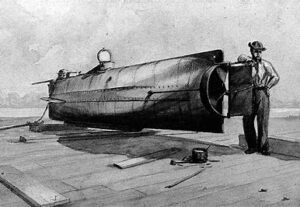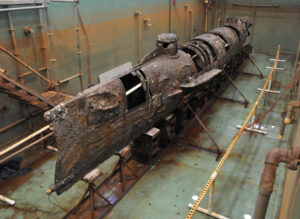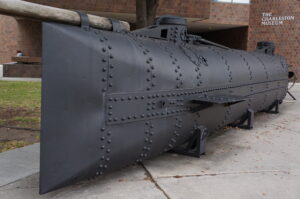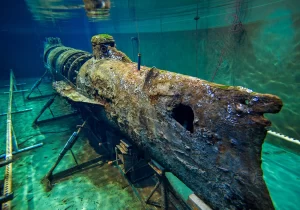
 At the onset of the Civil War, combat involved bayonets, horses, wooden ships, and inaccurate artillery. As the war progressed, the armaments evolved to include mines, precise firearms, more lethal bullets, torpedoes, and ironclad ships as the new norm. Although the majority of battles were fought on land, the struggle for naval supremacy was a pivotal aspect of the war. Control over the coastline meant control over vital imports from Europe and Coastal America, including essential supplies like clothing, food, artillery, medicine, and occasionally, reinforcements.
At the onset of the Civil War, combat involved bayonets, horses, wooden ships, and inaccurate artillery. As the war progressed, the armaments evolved to include mines, precise firearms, more lethal bullets, torpedoes, and ironclad ships as the new norm. Although the majority of battles were fought on land, the struggle for naval supremacy was a pivotal aspect of the war. Control over the coastline meant control over vital imports from Europe and Coastal America, including essential supplies like clothing, food, artillery, medicine, and occasionally, reinforcements.
As the United States Navy was constructing its first submarine, the USS Alligator, in late 1861, the Confederacy was also developing their own. Driven by a deep loyalty to the Confederate states and recognizing the potential financial benefits of sinking enemy ships, Horace Hunley, James McClintock (the designer), and Baxter Watson constructed the Pioneer. It underwent testing in the Mississippi River in February 1862 and was later moved to Lake Pontchartrain for further trials. The Union’s approach towards New Orleans led the team to halt development, and the Pioneer was scuttled in the following month. McClintock acknowledged the potential of a boat that could navigate freely at any depth, yet he believed improvements were necessary. The team, including Hunley, Watson, and McClintock, relocated to Mobile to work on a second submarine, the American Diver, in collaboration with Thomas Park and Thomas Lyons of Park and Lyons machine shops. The Confederate States Army supported their efforts, with Lieutenant William Alexander of the 21st Alabama Infantry Regiment overseeing the project. The builders tried various propulsion methods, including McClintock’s electromagnetic drive and a custom steam engine, but ultimately chose a hand-cranked system to avoid the excessive time and cost of more complex engines. By January 1863, the American Diver was ready for harbor trials, but its slow speed rendered it impractical. Despite this, an attack on the Union blockade was attempted by towing the submarine to Fort Morgan. Unfortunately, the submarine was lost to the turbulent waters and strong currents at the entrance of Mobile Bay during bad weather. The crew managed to escape, but the vessel was not retrieved.
The third submarine was the one that was eventually launched. The H.L. Hunley, also known as the CSS H.L. Hunley, played a minor role in the American Civil War. The Hunley demonstrated both the potential and perils of underwater combat. It became the first combat submarine to sink an enemy warship when it sunk the USS Housatonic. However, the Hunley was not fully submerged during the attack and was lost with all hands before it could return to base. Throughout its brief service, the Hunley sank three times, resulting in the deaths of twenty-one crewmen. The submarine was named after its inventor, Horace Lawson Hunley, and was commandeered by the Confederate States Army in Charleston, South Carolina.
The Hunley, measuring nearly 40 feet in length, was constructed in Mobile, Alabama, and set afloat in July 1863. Subsequently, it was transported via rail to Charleston on August 12, 1863. Initially known as the “fish boat,” “fish torpedo boat,” or “porpoise,” the Hunley first sank during a trial run on August 29, 1863, resulting in the death of five crew members. Tragically, it sank once more on October 15, 1863, claiming the lives of all eight crew members, including Horace Lawson Hunley, who was on board despite not being part of the Confederate military. After each incident, the Hunley was recovered and restored to service…until February 17, 1864, that is. That day, the Hunley attacked and sank the 1,240-ton United States Navy screw sloop-of-war Housatonic, which had been on Union blockade-duty in Charleston’s outer harbor. Again, the Hunley didn’t survive the attack, taking all eight members of the third crew with it. This time, the Hunley was also lost.
For years, the Hunley lay at the bottom of the harbor, but she was finally located in 1995. The Hunley was 
 recovered in 2000 and is exhibited at the Warren Lasch Conservation Center, located on the Cooper River in North Charleston, South Carolina. A 2012 examination of the artifacts retrieved from the Hunley indicated that the submarine was approximately 20 feet from its target, the Housatonic, when the torpedo it had deployed detonated, leading also to the submarine’s demise.
recovered in 2000 and is exhibited at the Warren Lasch Conservation Center, located on the Cooper River in North Charleston, South Carolina. A 2012 examination of the artifacts retrieved from the Hunley indicated that the submarine was approximately 20 feet from its target, the Housatonic, when the torpedo it had deployed detonated, leading also to the submarine’s demise.


Leave a Reply